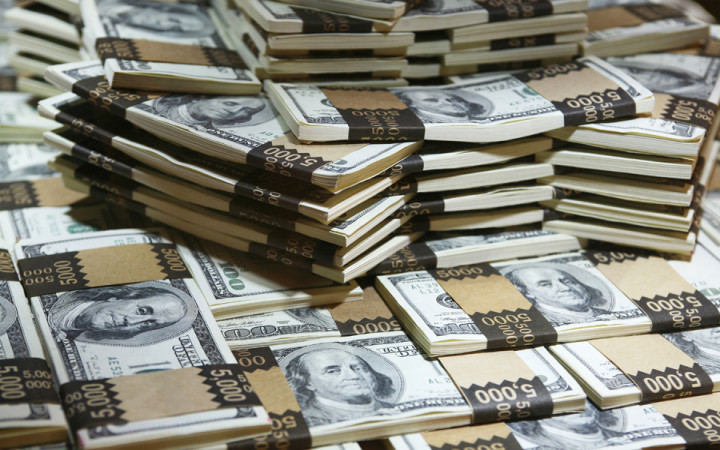Today’s Wonder of the Day was inspired by cassidy. cassidy Wonders, “how much money can a bank hold?” Thanks for WONDERing with us, cassidy!
Do you have a piggy bank? At one time or another, most kids receive a piggy bank from a friend or family member. It's a good place to store the money you get from the Tooth Fairy and for birthday gifts.
When you get older, you might transfer the contents of your piggy bank to a savings account at a bank. As you earn money doing chores, it's nice to have a savings account where you can put the money you earn.
If you've ever visited a bank, you may have seen the huge locked door of the vault where they keep most of the money in the bank. Have you ever WONDERed how much money could be stored in a bank vault?
With all the people depositing money into their accounts at the bank, the bank must have a ton of money, right? If you were to ask a bank manager, you might be surprised to learn that most banks have a lot less money on hand than you probably expect.
If you go to the bank to withdraw some money from your account, you'll need to process your transaction with a teller. The tellers have drawers full of money to take care of transactions, such as basic cash withdrawals.
Most of the other money in a bank will be held in a secure vault to keep it safe. Although a vault could hold millions upon millions of dollars in cash, most bank vaults contain only a small fraction of the money you might expect. Why is that?
Banks are in business to make money. They do not make money by keeping cash in the vault. Instead, when you deposit money into a bank, the bank uses your money to lend to others. When people pay interest on bank loans, banks make money.
Banks are not allowed to lend all of the money deposited by customers, however. The Board of Governors of the Federal Reserve System sets a reserve requirement for banks. The reserve requirement is the amount of cash reserves that banks must set aside, expressed as a percentage of transaction accounts, such as checking accounts.
For example, in the United States, small banks (those with less than $15.2 million in transaction accounts) have no minimum reserve requirement. Banks with $15.2 million to $110.2 million in transaction accounts must hold 3% in reserve. Large banks (those with more than $110.2 million in transaction accounts) must hold 10% in reserve.
These reserves must be maintained in case depositors want to withdraw cash from their accounts. Banks may keep reserves in two ways. They can keep cash in their vault, or they can deposit their reserves into an account at their local Federal Reserve Bank.
Most banks will deposit the majority of their reserve funds with their local Federal Reserve Bank, since they can make at least a nominal amount of interest on these deposits. Banks tend to keep only enough cash in the vault to meet their anticipated transaction needs.
Very small banks may only keep $50,000 or less on hand, while larger banks might keep as much as $200,000 or more available for transactions. This surprises many people who assume bank vaults are always full of cash. It has surprised many bank robbers, too. According to FBI data, the average bank robbery yielded only $4,330 in 2006, which likely reflects how little money is kept up front with the tellers.





